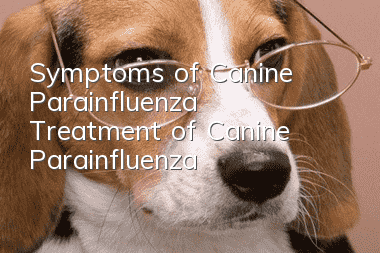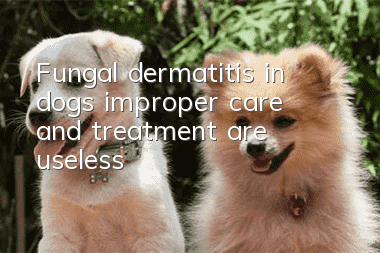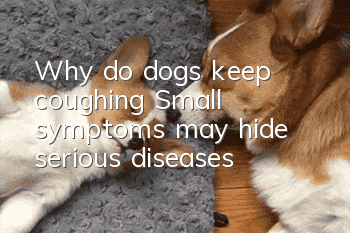Symptoms of Canine Parainfluenza Treatment of Canine Parainfluenza

Canine parainfluenza pathogens and epidemiology
1. Pathogen: Canine parainfluenza virus belongs to the family Paramyxoviridae, genus Paramyxovirus, and is a single-stranded RNA virus. The natural route of infection is mainly the respiratory tract.
2. Source of infection: Dogs in the acute phase are the main source of infection.
3. Susceptible animals: Dogs of various breeds, ages, and genders can be infected, but puppies are more severely infected and have a longer course of disease.
4. Epidemic characteristics: The disease can occur in different seasons. Poor sanitary conditions, crowding, long-distance transportation, and stress can aggravate the disease. Most cases are sudden outbreaks and widespread epidemics. This disease is endemic in almost all countries in the world.
[Symptoms]
Main manifestations: respiratory catarrhal inflammation, cough, initially a large amount of serous, then mucous, opaque nasal secretions.
Clinical features: acute onset, rapid infection, often onset first in the kennel, and then spread rapidly in the kennel, indicating an outbreak. Sick dogs have dry cough, serosal or mucus rhinorrhea, fatigue and depression. The course of the disease can last more than 3 weeks, and the condition is aggravated by mixed mycoplasma infection or Bordetella bronchiseptica (i.e., dog cough).
Some dogs show symptoms such as hindquarter paralysis and ataxia after infection. If the disease is not complicated by or secondary infection, the prognosis is generally good and the mortality rate is low. However, sick dogs are young and may die if not properly treated.
[Necropsy lesions]
In dead dogs, serous or mucopurulent nasal secretions around the nostrils, conjunctivitis, and inflammation of the tonsils, trachea, bronchi, and lungs can be seen Sexual changes, sometimes punctate bleeding in the lungs. Neurological dead dogs may have acute encephalomyelitis and hydrocephalus.
[Diagnosis]
A preliminary diagnosis can be made based on the clinical symptoms, epidemiology and anatomical changes of the disease. Similar to the clinical symptoms of canine respiratory infectious diseases, laboratory tests should be used for differential diagnosis, which can perform cell culture and isolation, and identify the pathogen. Serum neutralization test and hemagglutination inhibition test can be used for epidemiological investigation and retrospective diagnosis of this disease.
[Treatment]
Treatment is mainly symptomatic treatment and prevention of secondary infection.
Compound licorice mixture, Federal Cough Lotion, etc. can be used for dogs with dry cough. Ultrasonic aerosol therapy can be used for dogs with severe cough. Dogs with poor appetite can be given intravenous infusion of isotonic glucose solution, and attention should be paid to supplementing ATP, coenzyme A and vitamin C. , B vitamins; this disease is often secondary to infection with Bordetella bronchiseptica and Mycoplasma. To prevent secondary infection, cephalosporin, lincomycin, ampicillin, etc. can be used; for antiviral infections, ribavirin, etc. can be used; To improve resistance, hyperimmune serum or intravenous injection of serum albumin can be given.
[Prevention]
The main prevention of this disease is vaccination. Currently, most people in China useUsing canine six-link attenuated vaccine and five-link attenuated vaccine containing canine parainfluenza attenuated vaccine, puppies are generally vaccinated for the first time when they are 6 to 8 weeks old, and three consecutive vaccinations at 2-week intervals can achieve better results. Because the disease is mainly spread through the air and respiratory tract, once it occurs, it will quickly spread to the entire dog population and is difficult to control.
- What is special dog food? Let me introduce you to the most comprehensive special dog food
- What is the reason for severe hair loss in dogs? The root cause of dog hair loss has something to do with you!
- What methods can be used to detoxify a dog after being poisoned? Emergency treatment for different poisoning situations in dogs
- What are the symptoms of dog mange disease? [Picture] Severe cases can cause neuroencephalitis
- Three common skin diseases in dogs: Keep dogs away from skin diseases
- Is Noble dog food good? Is Noble dog food imported?
- Why do dogs have tear stains and how to reduce tear stains
- Completely correct your dog’s picky eating. This is how to cure your dog’s picky eating.
- Will dog skin diseases relapse after they are cured? Do these things to prevent recurrences
- What kind of dogs eat a lot? Do you know which dogs eat a lot?



